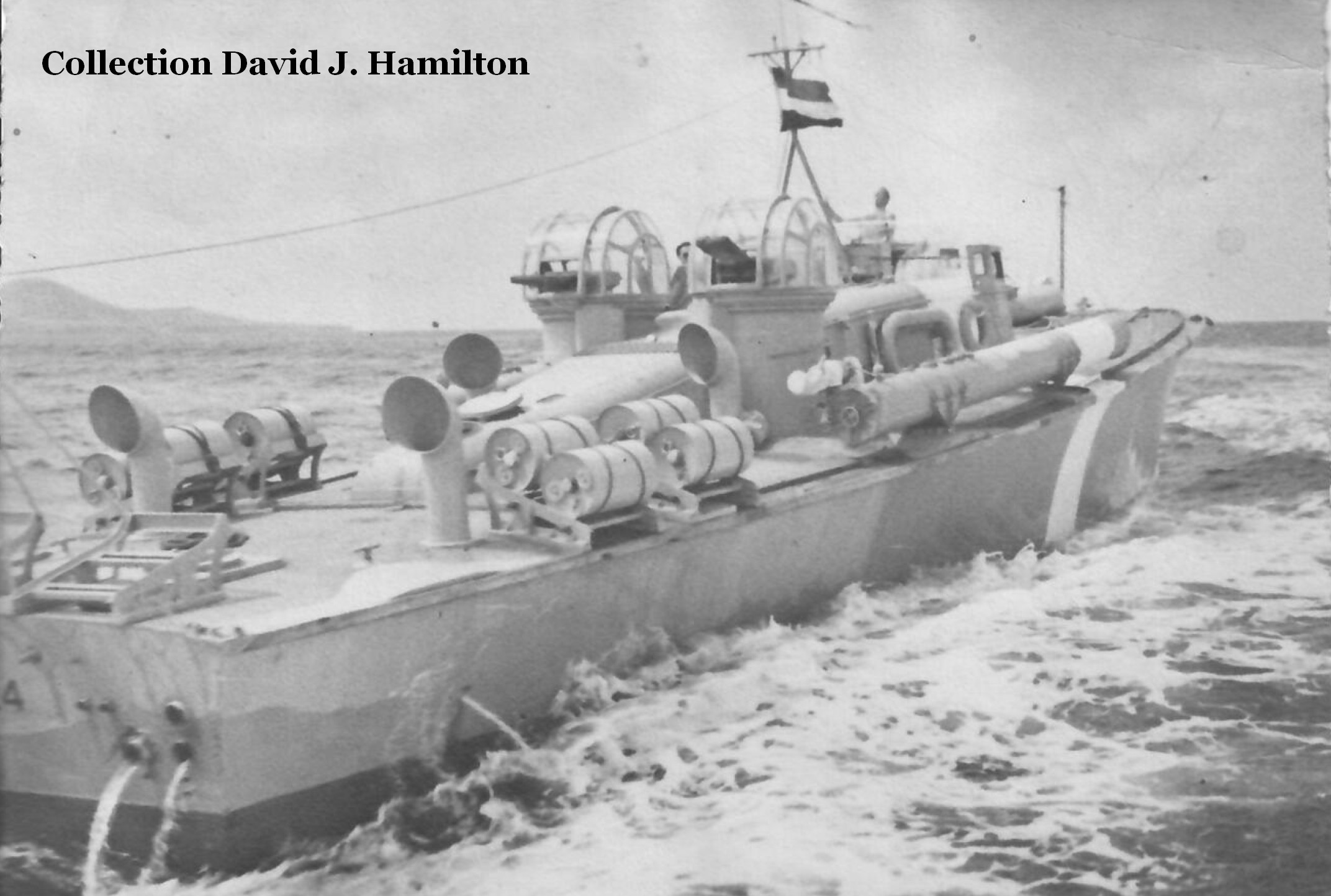Originally built for the NEI, these powerful MTB's, designed by Scott Payne, would have been a welcome reinforcement for the little offensive power the naval forces there had. Unfortunately, they were completed too late to fight the Japanese during their advance in early 1942. They were redirected to the West Indies, where the U-boat offensive began to take it's toll from the merchant navy. After the U-boat threat was gone, the surviving vessels were shipped to other parts of the world.
| Histories |
| TM-22 |
Stricken June 1 1947. |
| TM-23 |
On November 5 1942, TM-23 rescued the crew of 37 and Armed Guard of 12 men from the torpedoed US tanker Meton and brought them to safety. In addition, she saved 20 men from the Norwegian tanker Astrell. On February 19 1943, this boat found a ditched American bomber and saved her crew. While towning the floating plane back to Curacao, a cable got stuck in her screw, after which TM-25 and the tug Mico had to tow her back. Scrapped in 1943 after she broke her back during an air-sea-rescue search. |
| TM-24 |
Took part in the search for survivors of Astrell and Meton, and took aboard 22 men from Astrell. Scrapped in 1944 at the Naval Base Parera, Curaçao after she broke her back during an air-sea-rescue search. |
| TM-25 |
Lost 2 miles south of Punt Kanon, Curaçao to an internal explosion on February 27 1943. |
| TM-26 |
Shipped to Sydney, Australia in 1944 where she was rebuilt and commissioned as the patrolboat PMB-26. Turned over to the naval air service as an air-sea-rescue boat on May 1 1946. |
| TM-27 |
Lost in Curaçao to an internal explosion on July 6 1943. Remains were raised and probably scrapped. |
| TM-28 |
Shipped to the UK in 1944. Fate unknown. |
| TM-29 |
Shipped to the UK in 1944 and turned over to the Royal Navy. Stricken February 1 1946. |
| TM-30 |
Shipped to the UK in 1944 and turned over to the Royal Navy. Stricken April 1 1946. |
| TM-31 |
Saved the six men-crew of an American bomber in late February 1943. Shipped to the UK in 1944. Beached during a violent storm in the night of 1 and 2 September 1944 and damaged. Stricken afterwards. |
| TM-32 |
Turned over to the US Navy and commissioned on April 19 1943 as PT-368. Lost to grounding Halmaheira, NEI, position 01.59 N, 127.57 E. Destroyed
by own crew to avoid capture by Japanese on October 11 1944. |
| TM-33 |
Shipped to Sydney in 1944 and commissioned as the patrolboat PMB-33. Transferred on May 1 1946 as an air-sea-rescue boat to the naval air service. |
| TM-34 |
Commissioned as TM-32. Stricken after she broke her back during an air-sea-rescue search. |
| TM-35 |
Commissioned in the US Navy on March 27 1943 as PT-369. Decommissioned November 1 1945. |
| TM-36 |
Commissioned in the US Navy on April 22 1943 as PT-370. Decommissioned (?) November 1 1945. |
| TM-37 |
Commissioned in the US Navy on as PT-371 on April 10 1943. Grounded Molucca Passage( 02-05 N., 127-51 E.) on September 19 1944. . Destroyed by own crew to avoid capture. |
![]()
![]()

![]()